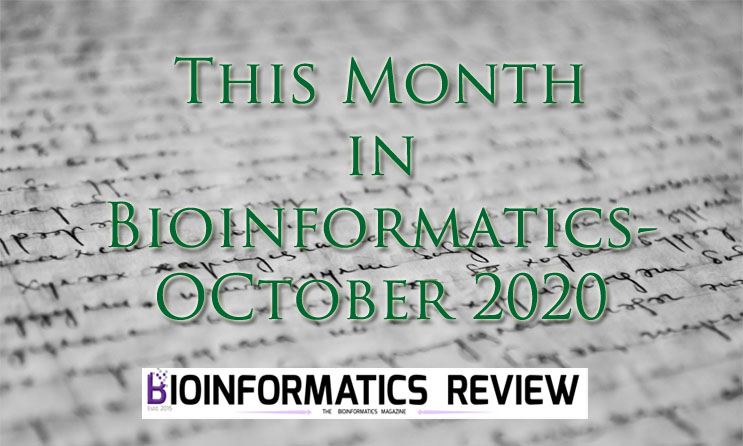Some of the important findings made this month in bioinformatics are mentioned in this article.
1. Fast histone turnover and H3.3 incorporation compatibility with hallmarks of heterochromatin
A new study on nucleosome turnover demonstrates that the fast histone turnover and H3.3 incorporation is compatible with the hallmarks of heterochromatin [1]. H3.3 is a replication-independent histone variant and is considered as a hallmark of regulatory regions in the animal genome. They have found that nucleosomes are evicted by the Smarcad1 chromatin remodeler leading to the generation of accessible DNA [1]. According to this study, Smarcad1 and H3.3 play opposing roles in the dynamic heterochromatin state in embryonic stem cells in mice. For more information, read here.
2. A new suite for PacBio Sequel raw sequence data analysis
A new suite of tools called SequelTools has been developed for analyzing PacBio raw sequence data [2]. SequelTools is a command-line program that consists of tools for read subsampling, quality control, and read filtering [2]. According to the authors, there is no such tool available yet for analyzing the quality, subsampling, and filtering of PacBio raw sequence data. For more information, read here.
3. A new tool for ORFs and microproteins function prediction
A new tool called smORFunction has been developed for function prediction of small open reading frames (smORFs) and microproteins [3]. smORFunction can predict functions of smORFs or microproteins in 265 models generated from 173 datasets. These datasets include tissues/cells, diseased, and normal. Currently, it consists of 617,462 unique smORFs that are annotated by different tools SmPROT and sORFs.org. For more information, read here and here.
4. A new model for androgen receptor toxicity prediction
A new prediction model has been developed for androgen receptor activity. This method is based on 2D chemical structure images of compounds [4]. This method extracts unknown features that may be neglected by conventional numerical methods. This method was tested on datasets and reveals high accuracy including a positive predictive value (PPV) of 0.933, Mathews correlation coefficient (MCC) of 0.688, a specificity of 0.998, a sensitivity of 0.519, and overall accuracy of 0.981 in 10-fold cross-validation. For more information, read here.
5. A new tool for geneset network analysis
Python Geneset Network Analysis (PyGNA) is a new tool developed for network-aware geneset analysis. It is based on an integrated statistical framework facilitating easy integration into existing analysis pipelines. It provides high-quality images and reports. PyGNA is available as a Python package at http://github.com/stracquadaniolab/pygna. For more information, read here.
References
- Navarro, C., Lyu, J., Katsori, A. M., Caridha, R., & Elsässer, S. J. (2020). An embryonic stem cell-specific heterochromatin state promotes core histone exchange in the absence of DNA accessibility. Nature Communications, 11(1), 1-14.
- Hufnagel, D. E., Hufford, M. B., & Seetharam, A. S. (2020). SequelTools: a suite of tools for working with PacBio Sequel raw sequence data. BMC bioinformatics, 21(1), 1-11.
- Ji, X., Cui, C., & Cui, Q. (2020). smORFunction: a tool for predicting functions of small open reading frames and microproteins. BMC bioinformatics, 21(1), 1-13.
- Yu, M., Lee, J., Lee, Y. et al. (2020). 2-D chemical structure image-based in silico model to predict agonist activity for androgen receptor. BMC Bioinformatics 21, 245.
- Fanfani, V., Cassano, F., & Stracquadanio, G. (2020). PyGNA: a unified framework for geneset network analysis. BMC bioinformatics, 21(1), 1-22.




